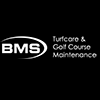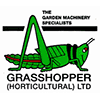ALL THE LEAVES ARE BROWN.........CHECKLIST FOR GARDENING WORK IN AUTUMN

Autumn is upon us, the evenings are gradually drawing in and winter is fast approaching. So what can garden owners look forward to in the autumn? Preparing for winter of course!
We can supply all the machinery and fertilisers to prepare you for the changing seasons and with our end of season sale now on, now is the perfect time to save ££££'s.
Planting and transplanting work
Autumn is a really good time for transplanting work because the soil has sufficient moisture thanks to regular rain showers. The ground is still warm from the summer, therefore the plants still have enough time to get used to their new position and form new roots.
This means new plants can also be planted in the autumn with no need to worry. This is the last chance before the winter to bring a bit of colour into the garden. Roses, for example, should be planted ideally in autumn, before the first ground frost.
Planting bulbs
Bulbs can also be planted in autumn so their flowers germinate from the soil at the right time in spring to delight you with their blaze of colour. The right position is crucial for the heralders of spring to thrive and flower. Most like fresh, moist soil in spring, but during their dormant period in summer the soil can be dry and porous. Bulbs should be planted in the ground at a depth of two to three times their height.
Cutting herbaceous perennials, bushes and shrubs
When shrubs go yellow, their stems bend towards the ground or they start to go to seed, it is time to cut them down. This is because the plants are now drawing their sap back to their roots. If they are not cut down, they may decay.
Bushes and shrubs can be cut to approximately a quarter of their size. This can, however, vary according to the type of bush or shrub. You can usually find more information about this from plant labels or your local garden centre.



Cutting hedges
Hedges should be pruned for the last time in autumn to prevent decaying if damp accumulates. Only cut deciduous hedges back as far as you can without creating any holes as these will not grow back over the winter, leaving the hedge looking bare. Any tree leaves lying on the hedge should also be removed as otherwise the hedge will not get enough fresh air and sun, resulting in rot.
Lawns
In winter, the wet, low temperatures and weak sunshine effect the lawn. That's why lawns need some TLC before the cold spell begins. When the leaves fall in autumn, they should be cleared from the lawn regularly. Leaves left lying on the lawn will deprive it of light and encourage the formation of dry, brown patches and the growth of moss. When it's time for your final cut make sure that the grass is not cut shorter than 5 cm as longer grass can make better use of less sunlight. This will ensure improved resistance against weeds and moss.
Using an autumn fertiliser is also recommended. Autumn fertilisers usually have a low nitrogen content and a high level of potassium. The increased amount of potassium strengthens the grass and increases its resistance to frost. Traditional lawn fertilisers should not be used in autumn since they contain a high amount of nitrogen and make the lawn grow faster, which in turn makes it more susceptible to frost.
Naturally, there are other small jobs which need to be done before the first frost:
• Beds, roses and other plants which are sensitive to frost should be covered with brushwood, leaves or similar. Alternatively it can be wrapped in bubble wrap.
• Dig out summer bulbs such as dahlias and store them in an airy box.
• Bring pot plants indoors or place them in a sheltered position.
• Switch off water connections, empty taps and watering devices so that frozen water cannot cause any damage.
• Dismantle pond pumps and, if necessary, install an anti-ice pump.
When winter comes, gardeners can enjoy a relaxing break from gardening. But watch out: It won't be long before it's time to get started again!
Have a question ? Then please call 01792 641517 or email info@celticm.co.uk
































































